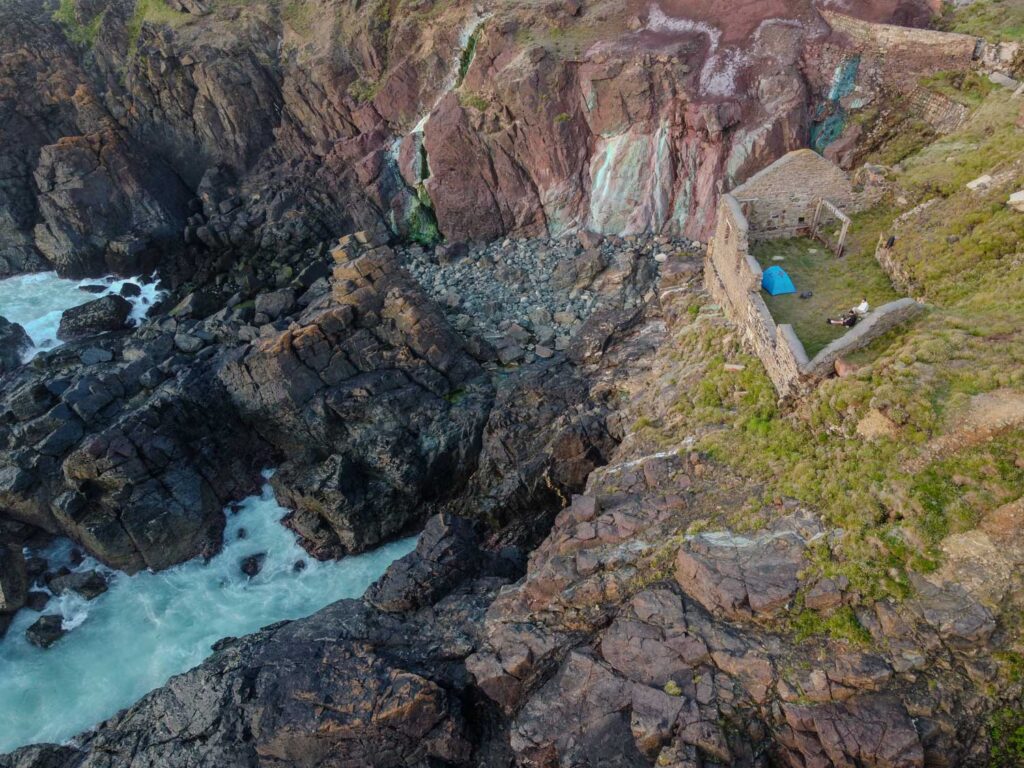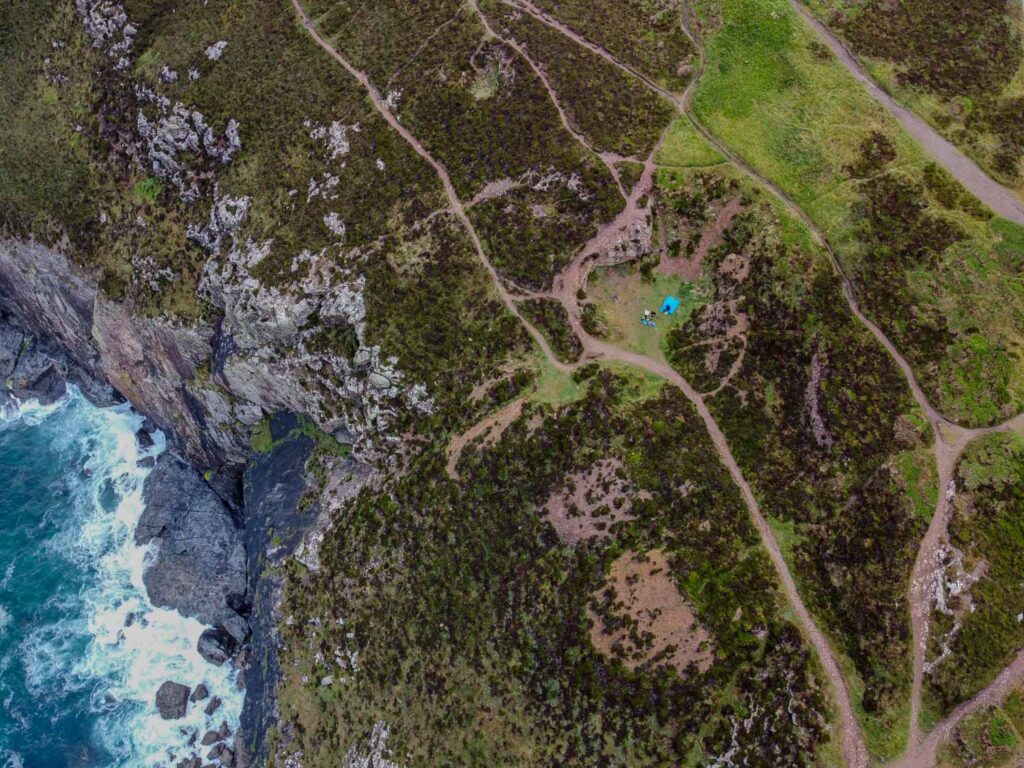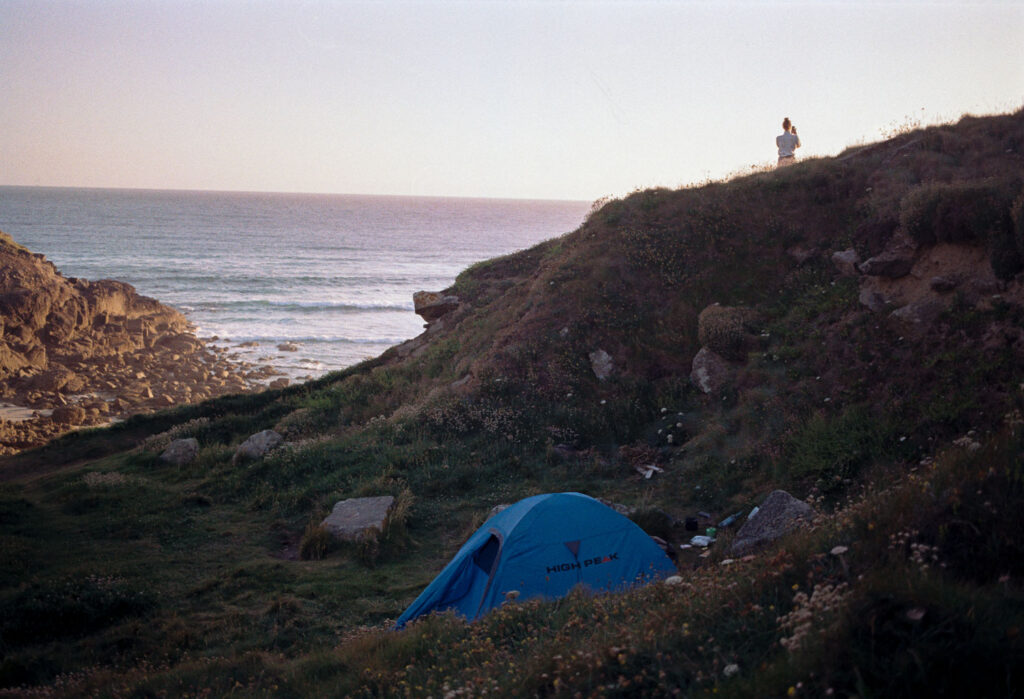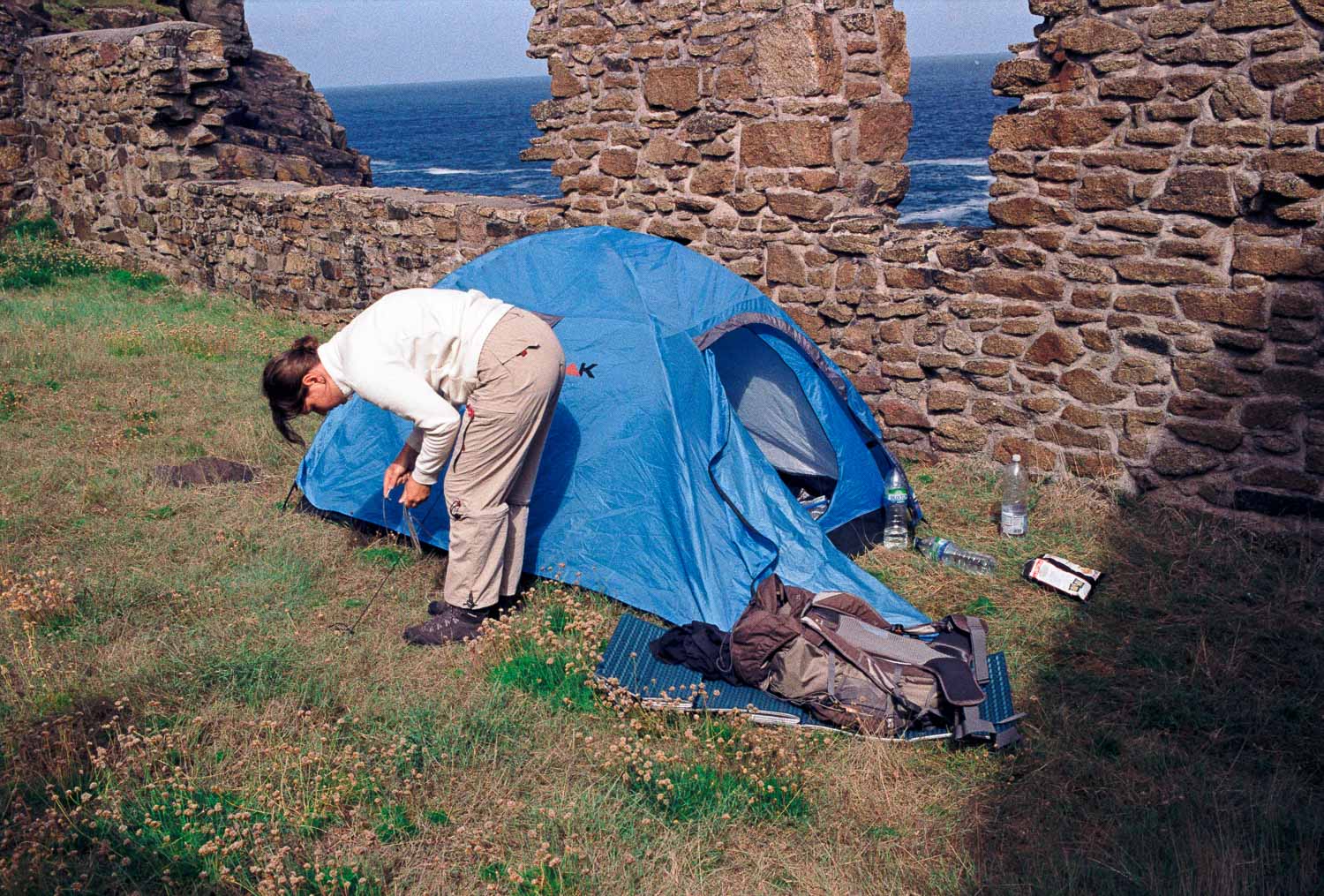Prior to hiking the SWCP one question in particular made me research the internet for hours: Can you easily wild camp along the route and find a good spot to pitch up without any problems? There was conflicting opinions on this topic, but mostly people just went for it and did not report any problems at all. And for this reason we did the same and just spent most of the nights camping along the trail on really beautiful spots and noticed that here and there other people where doing the same. So if you are also interested in this, this article is here to share our experiences.
Before setting off on our hike along the South West Coast Path (SWCP), there was one question that had me searching the internet for quite some time: Is it easy to wild camp along the route and find a decent place to set up camp without running into issues? The opinions online were mixed, but the general consensus seemed to be that many hikers simply went for it and encountered no real issues. We decided to do the same and ended up spending most of our nights camping in some truly stunning locations along the trail. We also noticed other hikers doing the same thing. If you’re curious about wild camping on the SWCP, this article is here to share what we learned from our experience.
Is wild camping along the SWCP allowed and legal?
Unlike the Nordics or some other areas where there’s a public right to wild camp, the South West Coast Path doesn’t offer this freedom because all land is privately owned, making wild camping technically illegal without the landowner’s permission—a permission that, realistically, isn’t feasible to obtain (though we did manage one time by coincidence). Legally, you’re only allowed to walk on the trail, as it’s designated by Public Rights of Way, and setting up camp without consent is technically trespassing.
However, as many others before us, we found that wild camping along the SWCP is generally tolerated. In fact, there was an occasion when a landowner noticed us searching for a spot and kindly offered us to camp in a large meadow near the village. Following common sense and the leave no trace principles greatly minimizes the chances of encountering any problems.
The best way to wild camp along the SWCP
Before we hit the trail, we had plenty of questions: How would we find the best spots to camp? How should we manage our supplies? And what would we do if we couldn’t find a place to camp? Fortunately, we didn’t run into any problems with our approach, so I’m here to share some insights from our experience.
How do you find a spot to wild camp
On most days, we had a rough idea of how far we wanted to hike and looked up small villages along our route. Using Google Maps, it was easy to check the surrounding areas and see if we were approaching a populated area or a quieter, more calm spot. After passing the last village of the day—usually between 4pm and 5pm—we’d start searching for potential camping spots that seemed quiet and secluded. Finding a spot was never a challenge. By using Google Maps and the official accommodation guide available on the South West Coast Path website, we always had a backup campsite option just in case we couldn’t find the perfect spot.
I’d suggest making the most of the last village you pass through to stock up on water and food. This way, you’re only carrying the extra weight for a short distance.
How to minimize the impact on the environment and handle your waste?
By following some basic principles and using common sense, we made sure not to harm the environment or disturb anyone nearby. Regarding waste management, because we stocked up our supplies in the last village each evening and started hiking early each morning, we rarely had to carry waste for long. We’d pack up, hike until we found a bin along the route, and dispose of our waste properly.
We usually set up our camp late in the evening and packed up early in the morning, especially for spots that were directly on the trail. We discovered some hidden gems where we also spend some time in the morning or set up camp a bit earlier than usual. However, for the most part, sticking to this approach made sense. At the more popular spots, we mostly encountered dog walkers in the early mornings. Everyone we met was friendly and didn’t seem to mind our camping. It’s generally understood that hikers are not the ones causing trouble, and locals are aware of this. We never started a fire, always opting to cook on a small gas camping stove instead. I wouldn’t recommend lighting fires, but if you must, try to use an existing fire pit.
Some of our pitches
To wrap up this article, here are some of the beautiful camping spots we used and came across.
Pitch by a mine near Holywell
A really beautiful spot, but unfortunately very close to water which made it a bit cold and wet.

Farmers Meadow
This is the meadow I mentioned earlier, the landowner was very friendly and we spent a relaxing evening here.

Pitch above the cliffs
The spot itself was stunning and also very sheltered, especially for a pitch that sits near the cliffs. However the sea in the cove below was a bit annoying during the night, I guess this is heavily dependent on wind and weather. We found it near the Geevor Tin Mine after searching for a bit.


St. Agnes Head
Around St. Agnes Head you can find a couple of lightly sheltered spots, as long as the wind is not too strong its no problem to spend the night here. However, I’d recommend pitching late and leaving early since it can get a bit busy at times with parkinglots nearby. We also met two or three other hikers that pitched in this area.

Around Land’s End
Pretty sheltered and beautiful spot near lands end, we spent the night with another hiker and his dog nearby. The place is perfect to watch the sunset.


